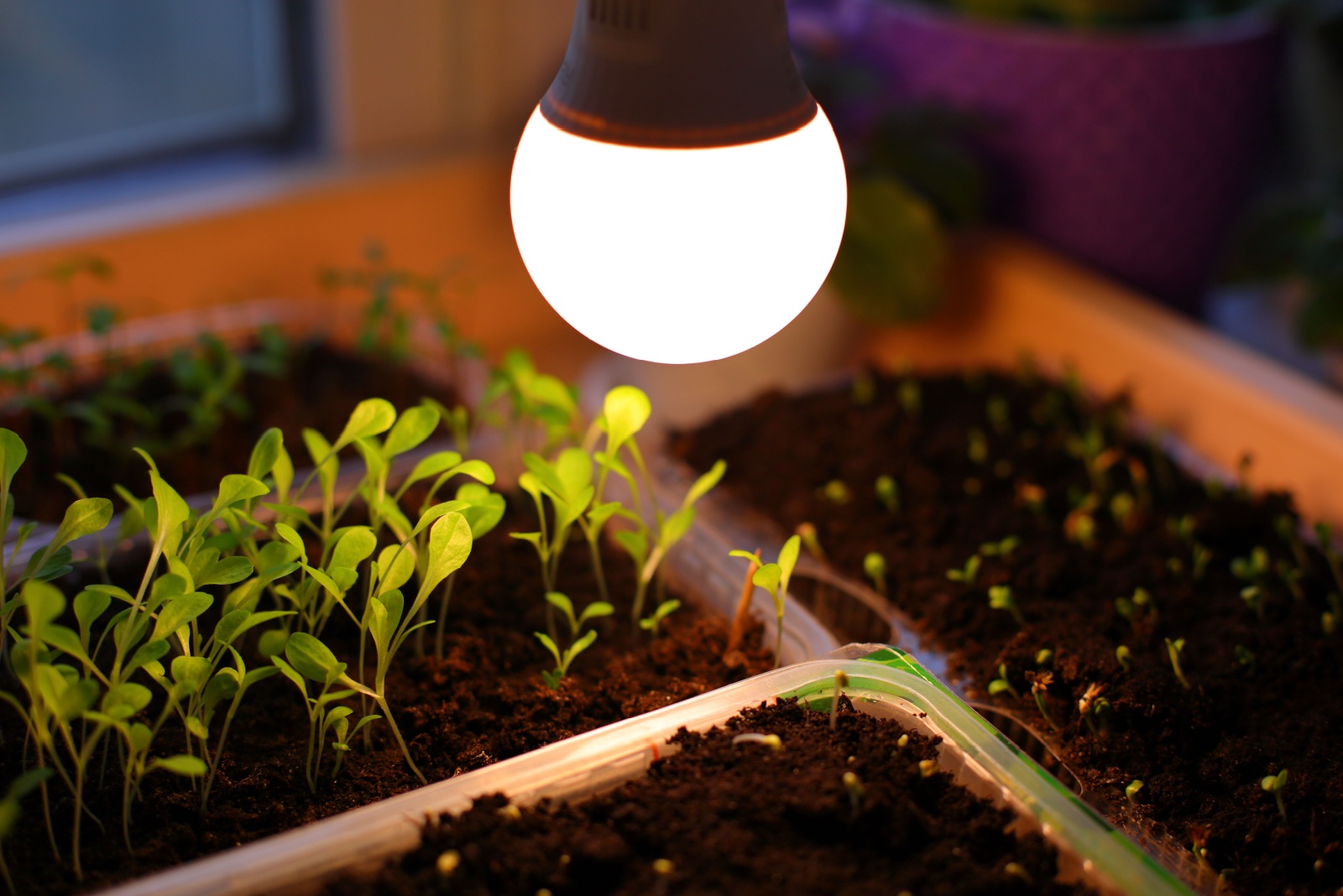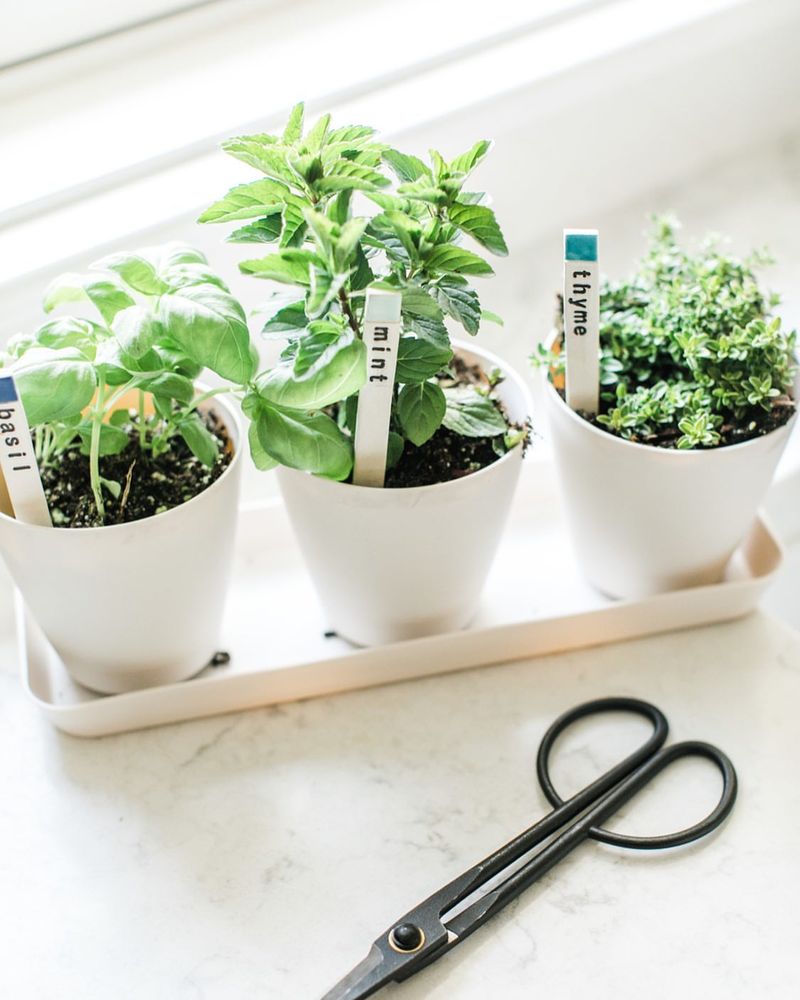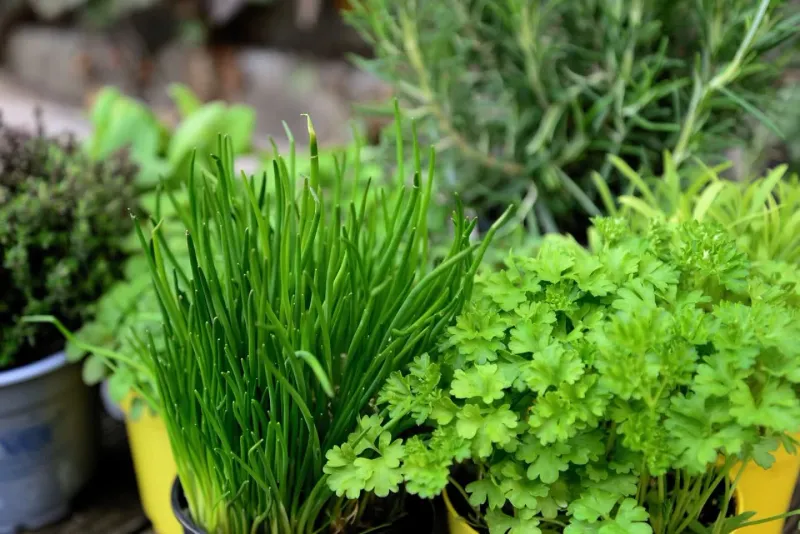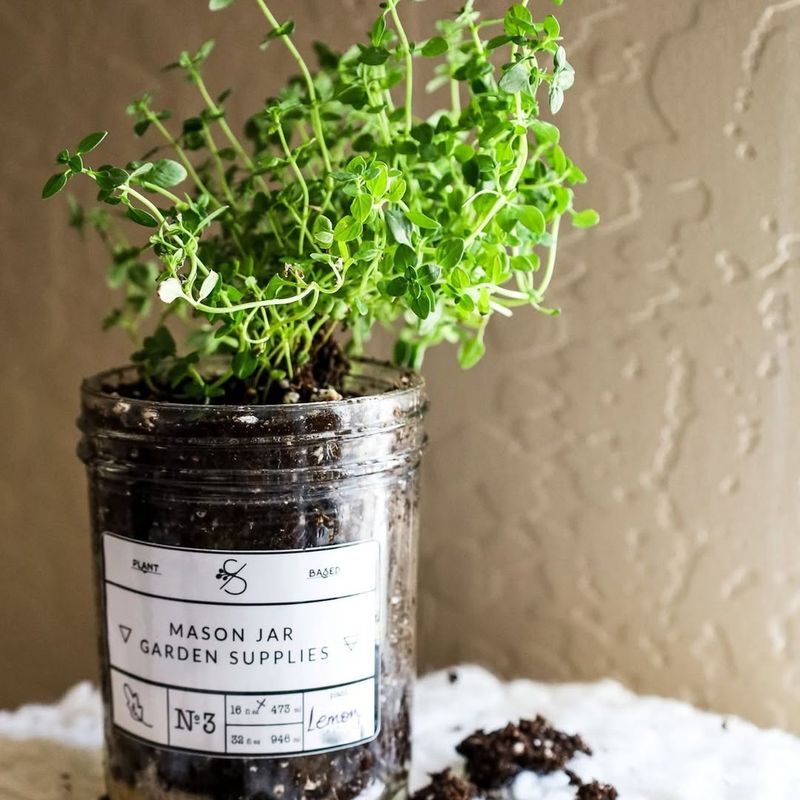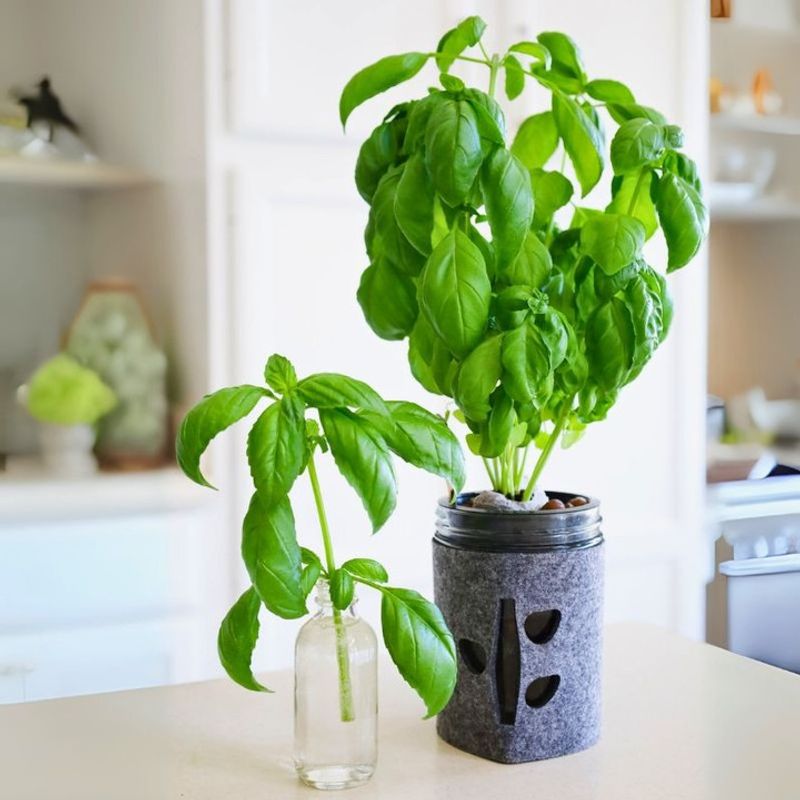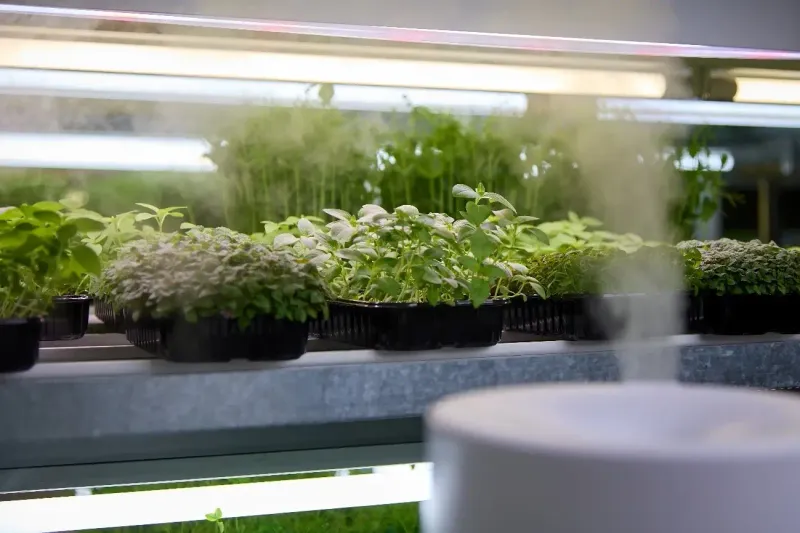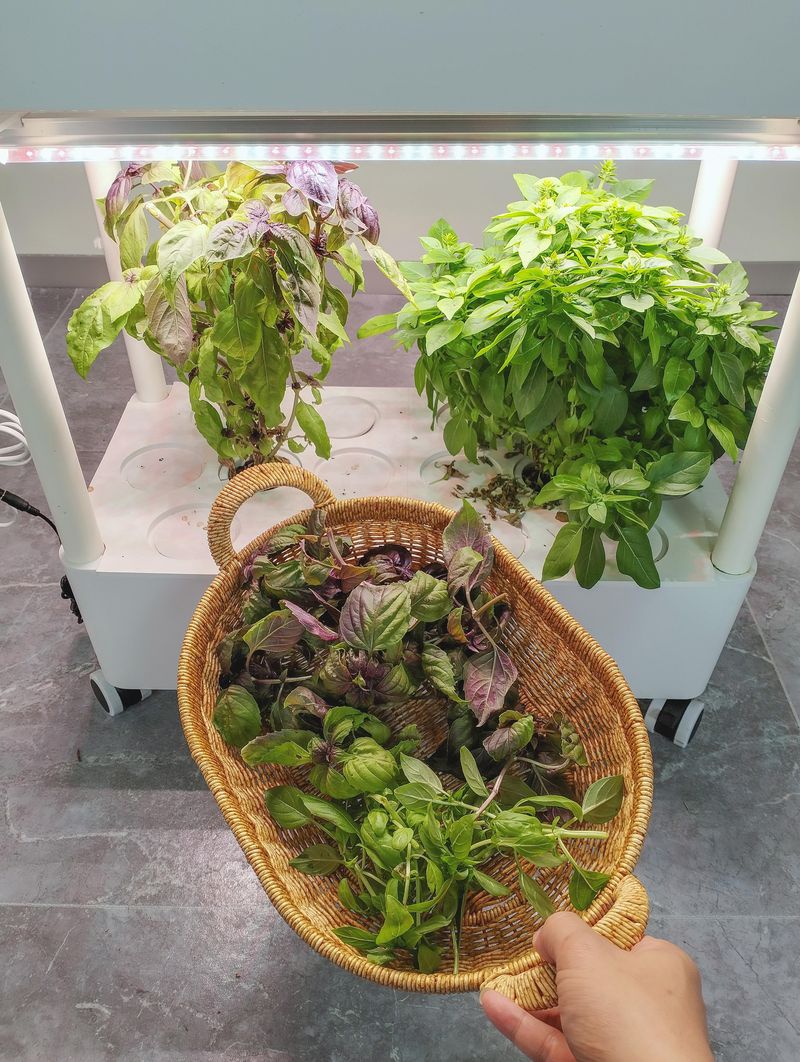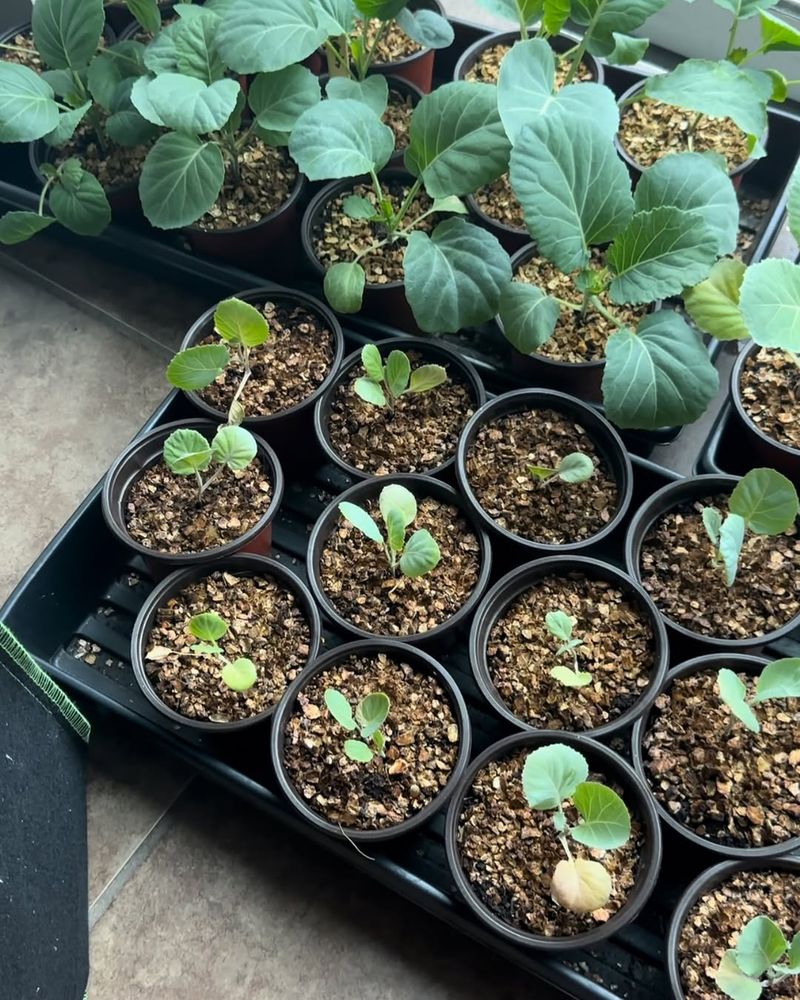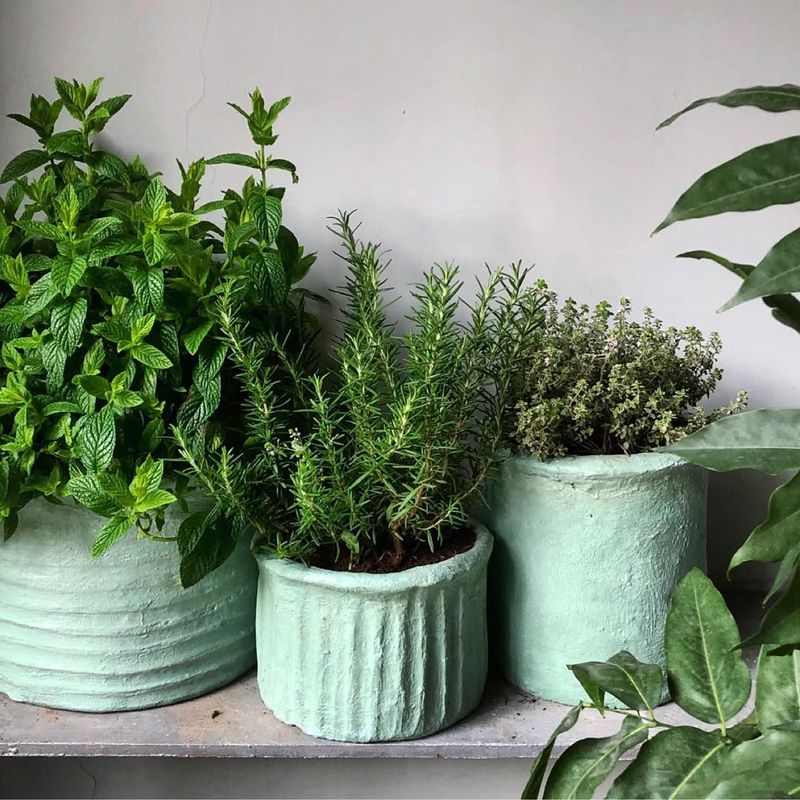Cold nights settle in and daylight slips away, yet I still crave fresh flavor straight from my windowsill.
My kitchen once felt too dim for anything green, but I found a simple approach that defies every doubt.
A small setup, the right light source, and a steady routine allow herbs to flourish even with zero natural sun.
I watch new shoots appear, stems strengthen, and leaves deepen in color as if they sit in a bright garden.
The process feels almost like a magic trick, and anyone who loves bold, fresh taste can pull it off with surprising ease.
Invest In Quality Grow Lights
Last winter, I tried growing basil on my windowsill and watched it slowly fade away.
Turns out, winter light just isn’t enough, even near a window.
That’s when I discovered grow lights, and honestly, they changed everything.
You don’t need anything fancy or expensive to start.
LED grow lights work beautifully and don’t use much electricity.
Hang them about six to eight inches above your herbs and keep them on for 12 to 16 hours each day.
Your plants will think they’re basking in summer sunshine.
Most herbs respond really well to this setup.
Just make sure the light covers all your pots evenly so every plant gets its share.
Choose Low-Light Herb Varieties
Not all herbs are created equal when it comes to light needs.
Some are total sun worshippers, while others are surprisingly chill about dim conditions.
Picking the right varieties from the start makes your life so much easier.
Mint, parsley, chives, and cilantro are your best friends here.
They tolerate lower light levels better than most.
Oregano and thyme can also handle less brightness compared to basil or rosemary.
If you’re new to indoor gardening, start with these forgiving herbs.
They won’t throw a fit if conditions aren’t perfect.
You’ll get fresh flavor without all the stress, and that’s a win in my book.
Use Reflective Surfaces To Boost Light
Here’s a trick I stumbled on by accident.
I had my herbs near a mirror, and they started growing way better on one side.
Turns out, reflective surfaces can seriously amplify whatever light you have.
Try placing your herb pots near white walls, aluminum foil, or even mylar sheets.
These surfaces bounce light back onto your plants from multiple angles.
It’s like giving them a light boost without buying extra equipment.
You can also use white trays or plates under your pots.
Every little bit of reflected light adds up.
This simple hack works especially well when combined with grow lights, making your setup even more efficient.
Maintain Proper Air Circulation
Nobody talks about this enough, but stuffy air can really mess up your indoor herb garden.
I learned this the hard way when my mint developed weird spots and stopped growing.
Fresh air movement is more important than you’d think.
A small fan running on low speed for a few hours daily works wonders.
It strengthens plant stems and prevents moisture from sitting on leaves too long.
This reduces problems with mold and keeps everything healthier overall.
Position the fan so it gently rustles the leaves without blasting them.
You want a light breeze, not a windstorm.
Your herbs will grow sturdier and tastier with this simple addition to your setup.
Water Smartly And Consistently
Overwatering is probably the number one way people accidentally harm their herbs indoors.
Without natural sunlight and outdoor conditions, plants use water differently.
I used to water mine every day until I realized I was basically drowning them.
Stick your finger about an inch into the soil before watering.
If it feels dry, go ahead and water until it drains from the bottom.
If it’s still moist, wait another day or two.
Herbs in winter need less water than in summer because they grow more slowly.
Room temperature water works best, and try to water in the morning.
This gives plants time to absorb what they need before nighttime temperatures drop slightly.
Feed Your Herbs Regularly
Plants growing in pots can’t reach deep into the ground for nutrients like outdoor plants can.
They depend entirely on what’s in their container.
After a few weeks, that soil gets pretty tired and needs a boost.
Use a balanced liquid fertilizer diluted to half strength every two to three weeks.
Too much fertilizer can actually hurt your herbs, making them taste bitter or grow too fast and weak.
Less is definitely more here.
Organic options like fish emulsion or seaweed extract work great and smell earthy rather than chemical.
Your herbs will reward you with fuller growth and more flavorful leaves.
Just remember to water before fertilizing to avoid burning the roots.
Control Temperature And Humidity Levels
My apartment gets super dry in winter when the heat kicks on, and my herbs were not happy about it.
They started getting crispy leaf edges and just looked sad.
Turns out, most herbs prefer moderate humidity and steady temperatures.
Try to keep your growing area between 60 and 70 degrees Fahrenheit.
Avoid placing herbs directly above heating vents or near drafty windows.
Temperature swings stress plants out and slow their growth considerably.
For humidity, a simple tray filled with pebbles and water under your pots helps a lot.
You can also mist your herbs lightly every few days.
A small humidifier nearby works wonders too if you have one available.
Prune And Harvest Frequently
This might sound backward, but cutting your herbs regularly actually makes them grow better.
I was nervous to trim mine at first, worried I’d hurt them.
Instead, they got bushier and healthier every time I harvested.
Pinch off the top sets of leaves regularly, right above a leaf node.
This encourages the plant to branch out sideways instead of just growing tall and leggy.
You get more leaves and a fuller plant overall.
Never take more than one-third of the plant at once though.
That gives it time to recover between harvests.
Plus, you get to enjoy fresh herbs in your meals all winter long, which was the whole point anyway.
Start With Healthy Transplants or Seeds
Your success really starts at the very beginning, with what you plant.
I once bought a sad-looking herb from a clearance rack and spent weeks trying to revive it.
Starting with strong, healthy plants or quality seeds makes everything easier.
Look for transplants with vibrant green leaves and no yellow spots or bugs.
The stems should be sturdy, not floppy.
If you’re starting from seeds, buy from reputable companies and check the germination date.
Fresh seeds sprout faster and grow more vigorously.
Give your herbs the best possible start, and they’ll be much more forgiving of any beginner mistakes you make along the way.
Quality matters more than you might think.
Use Well-Draining Potting Mix
Regular garden soil is way too heavy for container growing.
I made this mistake early on and wondered why my herbs looked so unhappy.
Roots need air as much as they need water, and dense soil suffocates them.
Buy a quality potting mix designed for containers, or make your own with peat moss, perlite, and compost.
The mix should feel light and fluffy, not thick and muddy.
Good drainage prevents root rot and keeps your herbs thriving.
Make sure your pots have drainage holes too.
Water needs somewhere to go, or it just sits there causing problems.
This foundation step sets you up for success with everything else you do for your winter herb garden.

